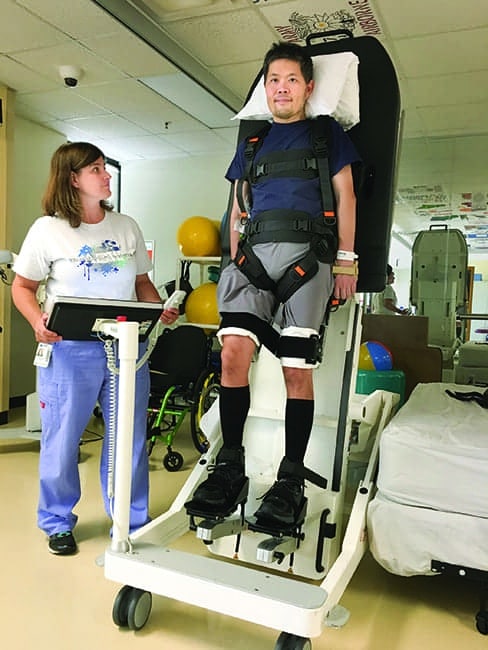
Therapist assists client with an incomplete cervical level of injury on a tilt table with robotic assist to complete active assisted strengthening in his lower extremities while weight bearing in preparation for gait training.
by Jennifer Cowhig, MPT, DPT, and Catherine Farrell, PT, NCS
Although the presentation of a spinal cord injury (SCI) can vary, it often affects the ability of an individual to stand and necessitates the use of a wheelchair. Approximately 17,700 new cases of individuals sustaining a spinal cord injury occur each year in the United States, roughly 54 cases per 1 million people.1 While the overall incidence seems small, the impact that the diagnosis has on one’s life is enormous. Primary impairments include loss of volitional movement and sensation below the level of injury, loss of bowel and bladder function, and potential loss of autonomic nervous system regulation.
Decreased mobility and an inability to stand significantly increases the risk for secondary impairments and potentially decreases quality of life.2 As medical management, rehabilitation practices, and technology continue to improve, more individuals are provided the opportunity to get back on their feet after spinal cord injury. Early standing with safe progressions, as well as affordable and realistic home standing recommendations, are critical components for achieving better medical, psychological, and functional outcomes that can positively impact patients throughout their lifetime.2,3
Incorporating standing into the patient’s rehabilitation schedule is relevant for all levels of injury. Those with complete as well as incomplete injuries consistently report benefits in bowel and bladder function, improved circulation, and psychological benefits from prolonged standing.2 Evidence also supports the use of standing to minimize the effects of orthostatic hypotension and improve out-of-bed and activity tolerance as well as prevent plantarflexion contractures of the ankles.2,4 When early and prolonged standing occurs or supported standing is combined with functional electrical stimulation (FES), the rate of bone mineral density loss reduces.5,6 Additionally, for an individual with an incomplete SCI, standing prepares them for pre-gait activities as well as offers a functional opportunity for trunk and lower extremity strengthening.
When considering the benefits of standing, early weight-bearing on the lower extremities and upright tolerance should become an integral part of initial rehabilitation. Once the patient has been cleared for mobility by the physician, the patient can safely begin the progression to a standing regimen.
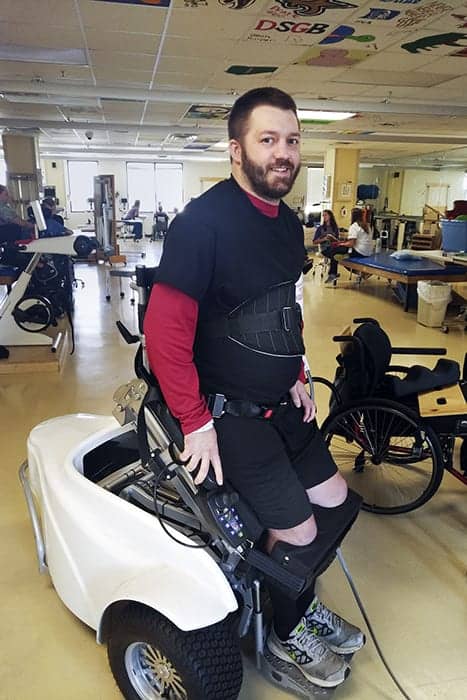
Recreational standing devices allow patients to incorporate standing with meaningful activities and increase the likelihood of carryover after discharge.
Who Is Appropriate?
In order to stand safely, there are several precautions and contraindications that should be considered. Typically, patients are screened for deep vein thrombosis and would need to be appropriately anticoagulated or cleared by the physician prior to standing. An individual must be cleared for weight-bearing on the lower extremities, although accommodations can often be made to allow unweighting one limb if necessary. Knowledge of a patient’s resting blood pressure provides valuable information regarding the body’s potential ability to tolerate upright.
Orthostatic hypotension is a common complication associated with spinal cord injury. The transition to upright can often cause an additional decrease in blood pressure. To combat the decrease of blood pressure, compression stockings and elastic wraps may be placed on the lower leg. Additionally, an abdominal binder, increasing fluids to increase blood volume, as well as FES-assisted contractions of the lower extremities7 may assist with maintaining blood pressure. It is important to be familiar with the patient’s current medications and the potential effect on blood pressure.
Individuals with upper extremity paralysis and decreased upper extremity function may require external upper extremity support via armrests or slings to prevent or minimize subluxation of the upper extremities.
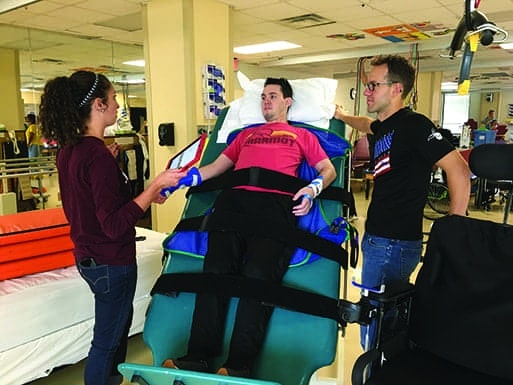
A client with a cervical level of injury reviews his therapy goals with physical and recreational therapists as he begins a standing progression to improve upright tolerance while secured on a tilt table.
What Options Are Used to Stand?
Multiple options are available for incorporating an upright lower extremity weight-bearing position into a rehabilitation protocol. Early in the rehab stage, tilt tables are frequently used. This piece of equipment is space consuming, although it is appropriate for even the most acute patients. Transferring to a tilt table can be accomplished via an overhead lift, a two-man lift, or by lateral transfer from an elevated mat or bed. The tilt table elevates from a supine position to an upright standing position. An advantage of this equipment is that it allows for a very graded and gradual ascent, allowing for better modulation or monitoring of blood pressure. Also, this allows the patient to be fully supported at all times.
A therapist may choose to utilize a standing frame after a patient is comfortable on the tilt table. Whereas the tilt table elevates from a supine position to an upright standing position in a slow controlled manner, the standing frame elevates from a sitting position to an upright standing position. This transition can be more challenging for an individual when compared to transitioning from supine to standing. The individual most appropriate to use a standing frame has some functional use of the upper extremities to allow for stability during the transition to stand.
Individuals with a thoracic level of injury are most appropriate for standing frames, although individuals with a cervical level of injury are also accommodated with tall backs, chest straps, and table support as well as assistance through the transition, if needed. Ideally, a patient transfers via depression or sliding board, although an overhead lift is also an option. Patients can utilize standing frames for home use and have the potential to operate independently.
The presence of lower extremity muscle activation increases the options available for standing. Alternative standing devices range from the use of inexpensive and minimal equipment to high-tech options that often are less available. Therapist-assisted standing, whether at the edge of the mat or in the parallel bars, is the most basic. A platform rolling walker with a wide base of support also provides the assistance and support often needed for standing. Orthotic equipment, such as a long leg bracing, is another option for maintaining a standing position for individuals with lower-level thoracic complete injuries or those demonstrating weak muscle activation in the lower extremities. More advanced standing alternatives include robotic tilt tables with FES capacity to mimic lower extremity stepping as well as exoskeletons. The most advanced weight-bearing option includes body weight-supported treadmills and robotic treadmill systems. These are expensive and not as readily available in most clinics. Individuals exhibiting lower extremity muscle activation are most appropriate for this option.
Regardless of the standing system used, it is important to monitor and assess the patient’s vital signs as well as physical symptoms such as light-headedness, sweating, and pallor. Upon onset of symptoms, the clinician and patient can determine whether it is best to maintain the position to challenge the body’s ability to maintain upright, or to decrease the position to elevate the blood pressure and reduce the symptoms.
In the inpatient setting, goals are often set based on improving function and independence; and frequent upright standing may not always fit easily into a rehabilitation program because of how treatment options are prioritized. Because of this, multitasking during standing should be considered. For example, while a patient is in a standing position, it is still possible to work on upper extremity and cervical strength, endurance, and range of motion? Even for an individual with a complete SCI, standing does not have to be a completely passive event. The benefits of standing, whether it be alone or in combination with other treatment options, should be considered. Once prolonged standing is safely established in the rehabilitation setting, it is important to consider recommendations for patients to continue to stand at home.
Paleg et al2 published a systematic review focusing on the effects of standing with individuals affected by stroke, SCI, and other neurological conditions. It suggested that the appropriate dosage of supported home-based standing was a duration of 30 minutes, five times weekly at a minimum.2 Ideally, 60 minutes a day, five times a week, was recommended.2 It also revealed that benefits from prolonged standing were more prevalent when standing was started early in the recovery process and less impactful when a condition was chronic; specifically when measuring ankle range of motion and bone mineral density.
Common challenges to continue standing at home include cost of recommended equipment, lack of caregiver assistance, and meeting dosing recommendations.3 Patients who are most successful at meeting dosage requirements are often independent with their transfers and have found a functional way of incorporating standing, regardless of standing system, into their current lifestyle and daily routine. This can be achieved by combining standing while performing daily activities, or while performing a home exercise program that focuses on upper extremity strengthening. Standing desks are becoming more popular in the workforce, and many individuals with SCI can also choose to incorporate standing in this manner. The evolution in mobility devices has also increased the opportunities their users have to participate in standing, as certain manual and power wheelchairs can be prescribed with standing features.
While incorporating standing into other meaningful daily tasks may help overcome the dosing barrier, funding for these systems continues to be a challenge. Standing equipment is often not deemed medically necessary and therefore is not covered by insurance. A letter of medical appropriateness stating the specific benefits for the patient may help to secure coverage from insurance companies. It is important to explore funding options and programs from a variety of organizations.
Often, patients want to stand because they ultimately desire to walk. For some, the challenge is to continue standing when functional gains toward ambulation are improbable. Improved education about the long-term benefits of standing may continue to motivate patients and therapists who question its value. A safe progression of standing during initial rehab and recommendations for appropriate equipment with practical home carryover create best practices to achieve positive outcomes. RM
Jennifer Cowhig, MPT, DPT, earned her master’s degree in physical therapy in 2007 from Georgia State University. Shortly after, she began her career at the Shepherd Center in Atlanta, specializing in spinal cord injury rehabilitation. As a float therapist, she has the opportunity to work across the continuum in the inpatient, day program, outpatient, and locomotor settings. Cowhig recently completed her Doctor of Physical Therapy degree from A.T. Still University.
Catherine Farrell, PT, NCS, is a senior therapist at Shepherd Center in Atlanta, currently working in the Activities Based Therapy program for spinal cord injury. She graduated from the Medical College of Georgia in 1995 with a BS in Physical Therapy. She obtained her board certification as a neurologic specialist from the APTA in 2015. For more information, contact [email protected].
References
1. Spinal Cord Injury Facts and Figures at a Glance. 2018 SCI Data Sheet. National Spinal Cord Injury Statistical Center Web site. https://www.nscisc.uab.edu/Public/Facts%20and%20Figures%20-%202018.pdf Accessed September 6, 2018.
2. Paleg G, Livingstone R. Systematic review and clinical recommendations for dosage of supported home-based standing programs for adults with stroke, spinal cord injury and other neurological conditions. BMC Musculoskelet Disord. 2015;16:358.
3. Eng J, Levins S, Townson A, Mah-Jones D, Bremmer J, Hutson G. Use of prolonged standing for individuals with spinal cord injuries. Phys Ther. 2001;81(8):1392-1399.
4. Newman M, Barker K. The effect of supported standing in adults with upper motor neurone disorders: a systematic review. Clin Rehabil. 2012; 26(12):1059-77. https://doi.org/10.1177/0269215512443373
5. Alekna V, Tamulaitiene M, Sinevicius T, Juocevicius A. Effect of weight-bearing activities on bone mineral density in spinal cord injured patients during the period of the first two years. Spinal Cord. 2008;46(11):727-732. https://doi.org/10.1038/sc.2008.36
6. Crosbie J, Tanhoffer AIP, Fornusek C. FES assisted standing in people with incomplete spinal cord injury: a single case design series. Spinal Cord. 2014;52(3):251-254. https://doi.org/10.1038/sc.2013.158
7. Raymond J, Davis GM, Bryant G, Clarke J. Cardiovascular responses to an orthostatic challenge and electrical-stimulation induced leg muscle contractions in individuals with paraplegia. Eur J Appl Physio Occup Physiol. 1999;80(3):205-212




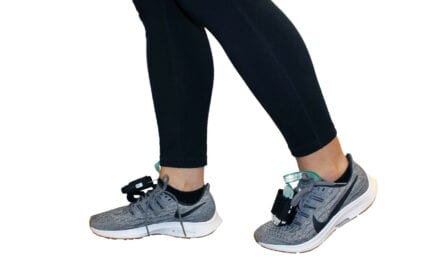
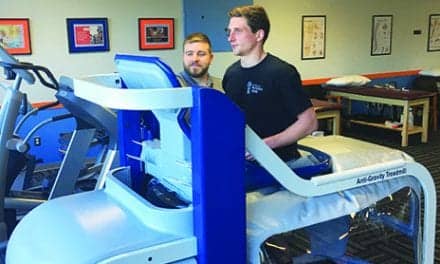
Catherine was the 1st PT that got me to stand up back in November 2007 in the Day Program. She’s the best. She then had to sit me down and take care of my mom due to the excitement of me standing for the 1st time without a harness assistance.
that’s me in the first picture 6 months ago. Now I can walk with an afo for couples of miles and haven’t needed the wheelchair since my discharge from shepherd. Catherine is awesome!
That is awesome! I am hoping that my brother will be doing this soon. I hope it’s not too late in his recovery.
May I ask you what kind of injury you had? Complete or incomplete? What level of the spine was your injury? (C1-5, Thoracic, etc)
Thank you. Keep up the good work!